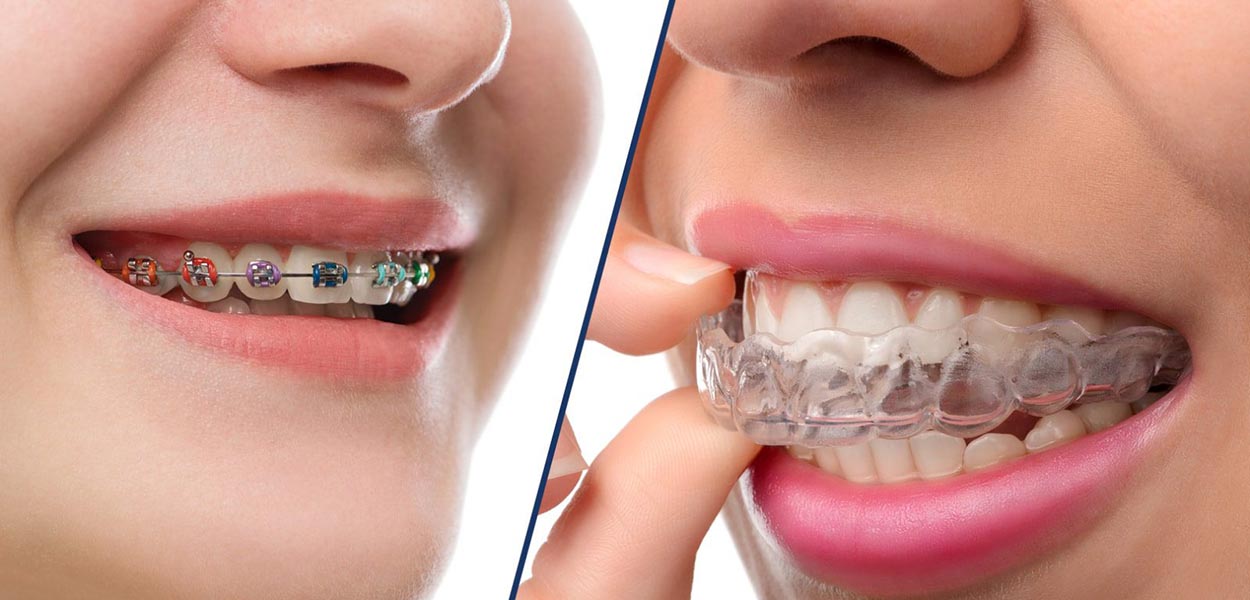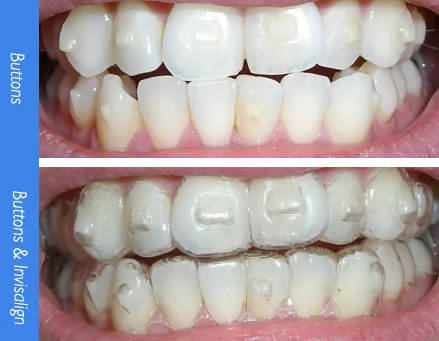Frequently Asked Questions Regarding Invisalign: Everything You Required to Know
Frequently Asked Questions Regarding Invisalign: Everything You Required to Know
Blog Article
Invisalign vs. Traditional Dental braces: Which Choice Is Right for You?
When considering orthodontic therapy, the choice in between Invisalign and conventional dental braces provides numerous crucial factors that warrant careful analysis. Invisalign uses a discreet option with removable aligners, while standard braces give a much more noticeable yet effective remedy for serious imbalance. Each choice incorporates distinctive benefits and disadvantages connected to looks, comfort, therapy period, and price. Recognizing these nuances is critical for making a notified decision that straightens with your personal choices and lifestyle. The question remains: which choice will ideal meet your orthodontic requirements and assumptions?
Review of Treatment Alternatives

In comparison, traditional braces include steel braces and cables that are adhered to the teeth. This method uses continual pressure in time to attain placement. While effective for complicated orthodontic problems, typical braces require routine visits for modifications and can present obstacles in maintaining dental hygiene because of the difficulty of cleaning up around brackets and cables.
Both alternatives have their benefits, and the option commonly depends upon specific dental conditions, lifestyle preferences, and client compliance. Ultimately, seeking advice from an orthodontic specialist is critical for determining the most ideal therapy strategy tailored to private requirements. Comprehending the subtleties of each choice can substantially influence the overall success of orthodontic treatment.
Visual Factors To Consider
A significant variable influencing the selection in between Invisalign and conventional braces is the visual appeal each treatment supplies. Invisalign aligners are crafted from clear plastic, making them essentially unnoticeable when put on.
On the other hand, traditional dental braces contain metal braces and wires, which can be a lot more noticeable. While innovations in orthodontic technology have actually led to the growth of smaller brackets and tinted elastics, typical braces still preserve an even more conspicuous account. For some people, the visibility of braces might deter them from seeking required therapy.
Inevitably, the choice in between Invisalign and typical braces may pivot on individual choices concerning aesthetic appeals. People that prioritize discretion commonly favor Invisalign, while those who are less concerned regarding exposure may go with conventional dental braces. Understanding the aesthetic ramifications of each choice is crucial for making an informed decision that lines up with one's lifestyle and preferences.
Convenience and Convenience

In regards to ease, Invisalign aligners are detachable, making it possible for people to appreciate their preferred foods without constraint and keep optimal dental health. Cleaning and flossing are simplified, More about the author as the aligners can be gotten during these regimens, whereas conventional dental braces need careful maneuvering around cords and brackets.
In contrast, typical braces necessitate normal adjustments, making them much less practical for those with busy timetables. Generally, the comfort and benefit of Invisalign make it an appealing selection for several people seeking orthodontic treatment.
Therapy Period and Efficiency
While both Invisalign and typical dental braces work in dealing with oral imbalances, the duration of treatment can vary substantially between both alternatives. Normally, Invisalign treatment can take anywhere from 12 to 18 months, relying on the complexity of the instance. The clear aligners work by slowly changing teeth into their desired settings, and normal follow-ups with an orthodontist help make sure progression remains on the right track.
On the other hand, conventional dental braces often require a longer dedication, usually varying from 18 months to 3 years. This is because of their set nature and making use of cords and brackets, which can be a lot more effective for severe imbalances and intricate instances (Invisalign). The treatment efficiency of traditional braces is well-documented, as they permit accurate adjustments and greater control over tooth movement
Ultimately, the choice between Invisalign and traditional dental braces might rest on both the expected treatment duration and the particular dental issues handy. Consulting with an orthodontist is essential, as they can offer tailored recommendations based upon specific demands, ensuring the chosen method aligns with desired outcomes and timeframes.
Expense Comparison and Insurance Policy Choices
Price plays a substantial duty in the decision-making procedure for people taking into consideration orthodontic treatment, whether opting for Invisalign or traditional braces. Typically, the cost of Invisalign ranges from $3,000 to $8,000, while standard braces normally set you back between $2,000 and $6,000. Aspects influencing these expenses consist of the intricacy of the case, the period of treatment, and geographical location.
Insurance protection can substantially affect out-of-pocket expenses. Many oral insurance plans provide partial insurance coverage for orthodontic treatments, yet the specifics can vary commonly. It is crucial for clients to review their insurance plan to figure out the level of coverage for either alternative. Generally, standard dental braces may be much more regularly covered by insurance strategies contrasted to Invisalign, which some insurance companies classify as a cosmetic procedure.
In addition, several orthodontic practices use adaptable layaway plan, making both therapy her response alternatives more easily accessible. Individuals must make inquiries regarding prospective funding choices and discount rates for in advance repayments. Assessing the overall cost, including insurance advantages and layaway plan, is crucial for making an educated choice that lines up with both aesthetic choices and spending plan factors to consider.

Verdict
In summary, the choice in between Invisalign and conventional braces depends upon multiple factors, including visual choices, comfort, therapy duration, and expense. Invisalign uses a discreet, detachable choice that helps with oral health and nutritional adaptability, while typical dental braces may be look at this site better for intricate dental issues and usually come at a lower cost factor. Inevitably, assessment with an orthodontist is necessary to evaluate private conditions and identify the most proper therapy option for achieving ideal oral placement.
When thinking about orthodontic therapy, the selection in between Invisalign and traditional braces provides a number of important factors that merit cautious examination.Contrasting Invisalign and conventional braces exposes unique therapy alternatives for orthodontic adjustment.While both Invisalign and conventional braces are effective in fixing dental imbalances, the duration of treatment can vary substantially between the two choices.Expense plays a substantial duty in the decision-making procedure for people thinking about orthodontic treatment, whether deciding for Invisalign or conventional dental braces.In summary, the choice between Invisalign and conventional braces pivots on numerous aspects, consisting of aesthetic choices, convenience, treatment duration, and price.
Report this page